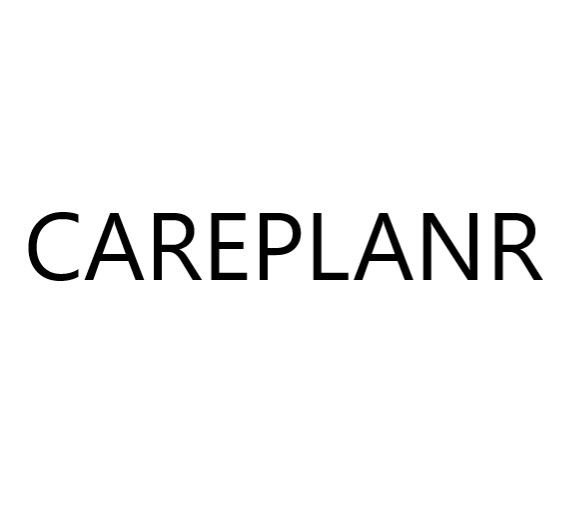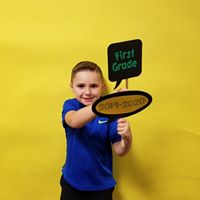Careplanr: Automated project management for delivery of primary care
by Jeff Huotari
Software that automatically tells providers/team members in real-time exactly what to do and when in order to meet the chronic condition/preventive service needs for each patient in their population.
Howell, MI United States Patient and Provider Tools For the Doctors Office Informatics AMIA2019 challengeAbout our project

The problem we solve: Primary care practices are responsible for proactively managing the chronic condition and preventive service needs of large populations of patients. Well-established guidelines reliably define at an action-step level what those needs are. However, planning and coordinating the execution of those known necessary action-steps for large populations of patients continues to be a highly manual, resource-intensive process prone to failure in large part because of a lack of time or tools to complete. This can result in important gaps in patient care, often affecting practice quality and safety. It can result in significant inefficiencies created by reactive care to “close gaps”. It can result in financial losses to practices in at-risk or reward-based value contracts. Careplanr aims to address this important challenge by creating a software tool to automate the complex task of planning and coordinating each individual patient’s chronic condition and preventive service needs.
About our solution: From a common set of extracted EHR data, Careplanr will create a batch of real-time evidence-based individual primary care plans for every patient in a practice population with a click of a button. These care plans will identify detailed chronic condition and preventive service needs, assign action steps to complete each need, mesh and batch like actions, identify who needs to complete the actions and when, and appropriately arrange into office, telephone, video, lab or other encounters throughout the year based on task and time required. Most primary care delivery involves managing 10s to 100s of these actions per patient each year. Many actions are completed outside of the planned care in asynchronous and unpredictable ways (urgent care and ED visits, hospitalizations, etc.). The care plan will allow for those completions to be captured and updated in real-time to avoid duplication.
Progress to date:
This project is slightly beyond the idea stage. The specific project steps have been defined. The chronic condition and preventive service guidelines, action steps and other data have been identified. A next step is to create the algorithms and software to automate the process.
About Our Team

Creator: Jeff Huotari
Location: Michigan
Education: University of Minnesota
Bio: I enjoy working hard for things that I believe in. I am comfortable going against the grain to demonstrate that something is possible. I'm a health care skeptic. We as an industry are no where close to where we should be in delivering value. I spend my work days trying to improve this. After hours, I'm happiest outside, in the weather, doing something active with family. Some of my current activities include: -Full-time board-certified Family Medicine physician -Founder and President of BlueSky Health, an innovator in primary care design -Primary Care Leadership Committee, Blue Cross Blue Shield of Michigan (BCBSM), an invited council of about 10-15 health care leaders in Michigan tasked with advising BCBSM leadership on policy and programmatic proposals related to their patient-centered medical home (PCMH), ACO, and value-based reimbursement programs -Population Health Management Champion, Aspirus Keweenaw Hospital, BCBSM Pay-for-Performance Program -Medical Director for the Livingston Physician Organization's BCBSM Physician Group Incentive Program Some past milestones include: -Designed, constructed, operating two new-model primary care clinics using lean, low-overhead, technology-driven design (Houghton, MI, 2006 until sold in 2014;Howell, MI 2012-present) -Houghton clinic in inaugural class of BCBSM PCMH-designated clinics in 2009 and all subsequent years -Houghton clinic selected for Michigan State Medical Society Model Practice Case Study in 2010 (1 of 11 practices selected statewide) -Houghton clinic one of several selected nationally for Institute for Healthcare Improvement/IDEO design project for colorectal cancer screening in 2011 -Houghton clinic featured in Medical Economics, “Patient-satisfaction improvements in small doses”, April 25, 2011 regarding designing an efficient workplace -Top 3 American Academy of Family Physicians 2018 Innovation Fellowship project proposal
Hospital Affiliation: BlueSky Health
Title: Owner
Advanced Degree(s): M.D.
About Our Company
BlueSky Health
Location: 138 W. Highland Road
950
Howell, MI 48843
US
Founded: 2006
Website: https://blueskyhealth.org/
Facebook: https://www.facebook.com/blueskyhealth
Product Stage: Idea
Employees: 3-5
How We Help Patients
It is likely safe to say that no patient knows all of the interventions that are indicated for them based on their age, sex, family history, chronic conditions and potentially other factors that are included in current guidelines. It is also accurate to say that if they are relying on their provider to know and deliver all of these interventions, the evidence shows this does not happen. This software, by way of the care plans produced, offers an opportunity for improved shared decision making by improving transparency as to what interventions are indicated, improved consistency and reliability in care received by improved standardization across providers, more efficient care through improved coordination, less cost in care by way of less duplication, and improved quality and safety because of less missed care.
How We Help Physicians
The vast majority of care coordination/arranging of care remains mostly manual (searching of charts, manual entry, etc.). Because of lack of time, it often simply cannot done, leading to gaps in care including delayed care or no care at all. Automating the majority of the process is likely to lead to improved completion of care, improved quality and efficiency of care, and improved provider work experience. The improved completion of care may lead directly to improved revenue through capture of bonuses or gains in pay-for-performance and value-based contracts, and may lead to more comfort in negotiating favorable at-risk contracts because of a predictable consistency of care.
How We Help Hospitals
Variation in care among caregivers undermines quality, efficiency and the patient perception of care. As organizations increase in size, addressing variation becomes increasingly important, but it remains one of the most difficult areas in which to implement change, especially among providers. These care plans provide an additional means by which change, almost by default, can be distributed since the care plans provide a standardized, evidence-based foundation of care (it's more difficult to argue against or be resistant to evidence) that is visible not only to the provider, but also to the other team members and to the patient (necessitating increased provider accountability). Depending on their existing culture, hospitals and other larger medical institutions may find this benefit as useful as the already described possible quality, efficiency, safety and revenue gains.
How We Help Partners
Health care is so complex, and so not-logical in many ways, that sometimes you need the benefit of access to a physician partner. Many physicians know things about how the health care system works that an outsider just could never predict. I've personally learned the hard way as well as through observation where decisions are really made, how dollars flow, and what ideas are likely work or not work and why. It seems that the health care start-up road is littered with good, logical plans that don't succeed, often because they were not vetted correctly by someone on the front-line. A great partnership can help avoid this.
Challenge Mission
Affiliation(s)
None
Key Milestones Achieved and Planned
None
Our Competitive Advantages
Our differentiator will be simplicity without bells and whistles. It will do the specific job its designed to do and do it exceptionally well. It will sell itself with the first care plan demonstration. In addition to those potential clients mentioned, we will consider targeting patient advocacy groups.
Barriers to Entry
This will be difficult. Being first-to-market and getting imbedded in work flows will be key. The time and expense of organizational change once a product is in place may be the greatest protection against competitors. A second critical piece is ensuring a really good user interface. Many health IT companies do not understand their users well enough, and get the interface wrong. I feel we are positioned to avoid this as I do the work that we are designing for, I have a strong interest in design, and will be actively involved in it.
Funding, Partners and Alliances To Date
No funding or engagement yet.
Revenue
No revenue to date. Goal is one health system contract Year 1 with $50,000 revenue, 3 system contracts Year 2 with $150,000 revenue, and 10 system contracts Year 3 with $1,000,000 revenue. If data supporting efficiency/labor cost savings, pay-for-performance gains, and quality score improvements accumulates, I expect increasing traction and revenue each year. Here is a sample calculation of a potential cost savings that an organization could experience:
It is estimated that one care plan will save an average of 30 minutes of care plan generation nurse labor per patient per year. In a sample practice of 10,000 patients, this represents 5,000 hours saved. At a sample rate of $30/hr/outpatient RN labor cost, this represents $150,000 in labor cost savings per year for a practice of 10,000 patients. It is estimated that proactive scheduling driven by the care plan will save an average of 15 minutes of medication refill requests and lab result requests medical assistant labor per patient per year. By a similar calculation at a rate of $20/hr/medical assistant labor cost, this represents $50,000 in labor cost savings per year for the same practice. In addition, depending on organization size, current performance, and type of payer contracts, there is the potential for recovering tens to hundreds of thousands of dollars in revenue currently lost to gaps in care within pay-for-performance and at-risk value-based contracts.
Innovation Details
Intellectual Property Summary
No current Intellectual Property.
Clinical Information
Does not apply.
Regulatory Status
Does not apply.
How we will use the funds raised
The funds will be used to create a proof-of-concept software tool that automates the planning and coordinating of yearly chronic condition and preventive service needs for individual patients from an uploaded batch of extracted electronic health record population data. It is anticipated that 3 chronic condition needs and preventive services needs for the 50 and over age group will be represented in this version. If successful, an additional $100,000 to $250,000 in funding will be sought to create a version with an estimated 15 chronic condition needs and preventive service needs for all ages.
Thank You
Health care is exceptionally complex. Primary care, as the foundation of a highly-functioning health care system, is tasked with coordinating this complexity. However, it, perhaps more than any other specialty in medicine, suffers from a dearth of tools to assist it in its most critical role. We primary care providers are trying to manage tens to hundreds of data points and action steps on each individual patient. We are typically doing this for thousands of patients at a time, yet our most advanced electronic health records and registry tools remain mostly glorified reminder systems, leaving us to do the rest manually if at all. Your contribution to this project can change that, and directly improve the safety, quality and efficiency of care that you yourself may one day receive.
Updates
No updates found .
Supporters
-
, PhD
11/04/2019 - Interested in helping your project as a mentor or team member., PhD
11/04/2019 - Followed the project.
11/04/2019 - Liked the project., DO
11/01/2019 - Liked the project.
10/30/2019 - Backed the project for $10
10/30/2019 - Liked the project.
10/23/2019 - Liked the project.
10/18/2019 - Followed the project.
10/18/2019 - Liked the project.
10/18/2019 - Followed the project.
10/18/2019 - Liked the project.
10/17/2019 - Liked the project.
10/17/2019 - Followed the project.
10/17/2019 - Followed the project.
10/17/2019 - Liked the project.
10/17/2019 - Followed the project.
10/17/2019 - Liked the project.
10/17/2019 - Liked the project.
10/17/2019 - Liked the project.
10/17/2019 - Liked the project.
10/17/2019 - Followed the project.
10/17/2019 - Followed the project.
10/17/2019 - Followed the project.
10/17/2019 - Followed the project.
10/17/2019 - Liked the project.
10/17/2019 - Followed the project.
10/16/2019 - Followed the project.
10/16/2019 - Liked the project.
10/16/2019 - Liked the project.
10/16/2019 - Liked the project.
10/16/2019 - Liked the project.
10/16/2019 - Liked the project.
10/16/2019 - Followed the project.
10/16/2019 - Followed the project.
10/16/2019 - Liked the project.
10/16/2019 - Liked the project.
10/16/2019 - Followed the project.
10/16/2019 - Liked the project.
10/16/2019 - Followed the project. Instant Feedback
Instant Feedback
Help us find best new ideas to fund by telling us what you think. Your feedback goes straight to the team behind this project in private, so tell them what you really think.
102Medstartr
Index Score102
Interest
Score0
Adoption
Score23
Likes0
Partners0
Pilots17
Follows-
This campaign has ended but you can still get involved.See options below.
$10 pledged of $30,000 goal
Instant Feedback
Help us find best new ideas to fund by telling us what you think. Your feedback goes straight to the team behind this project in private, so tell them what you really think.




